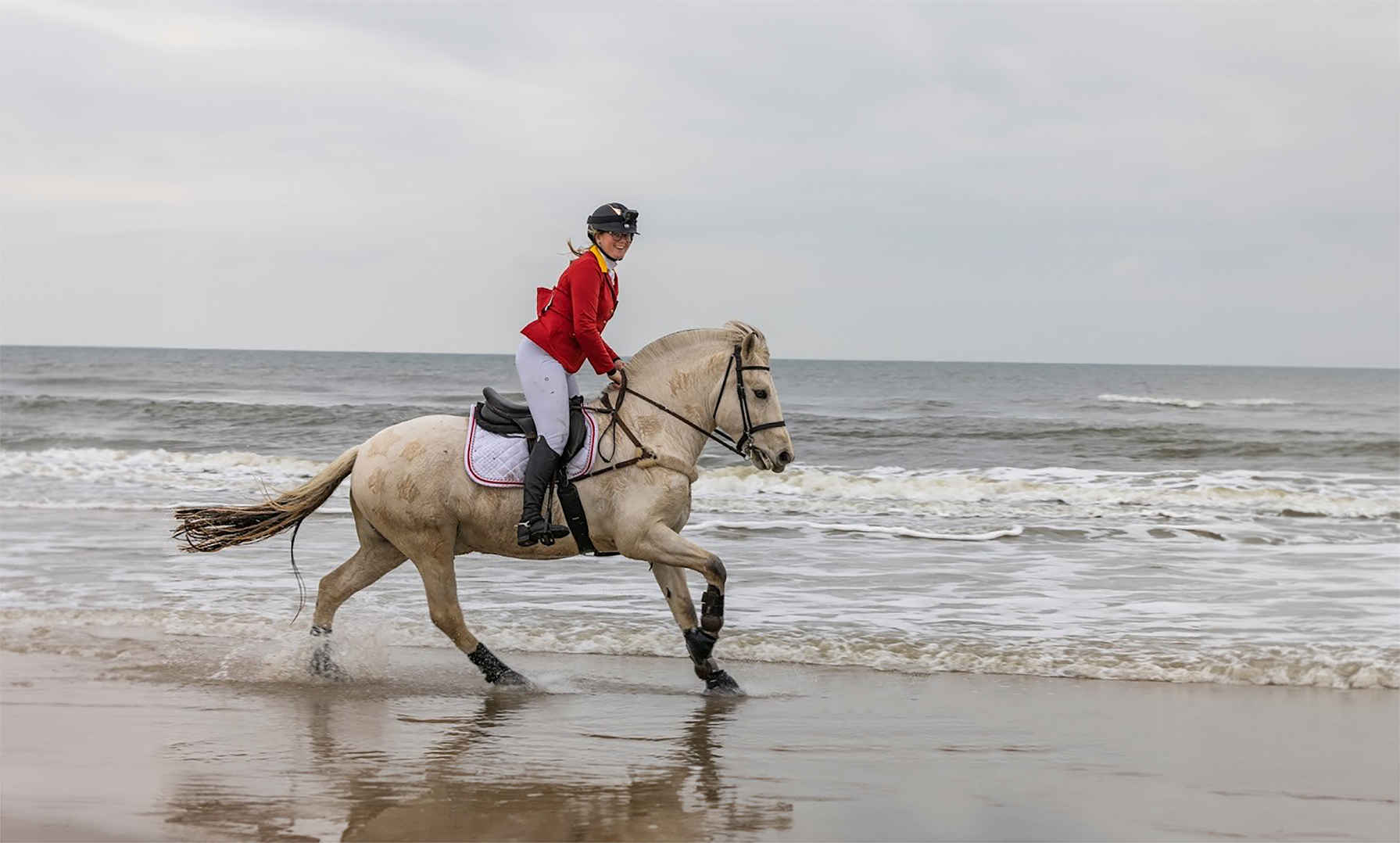
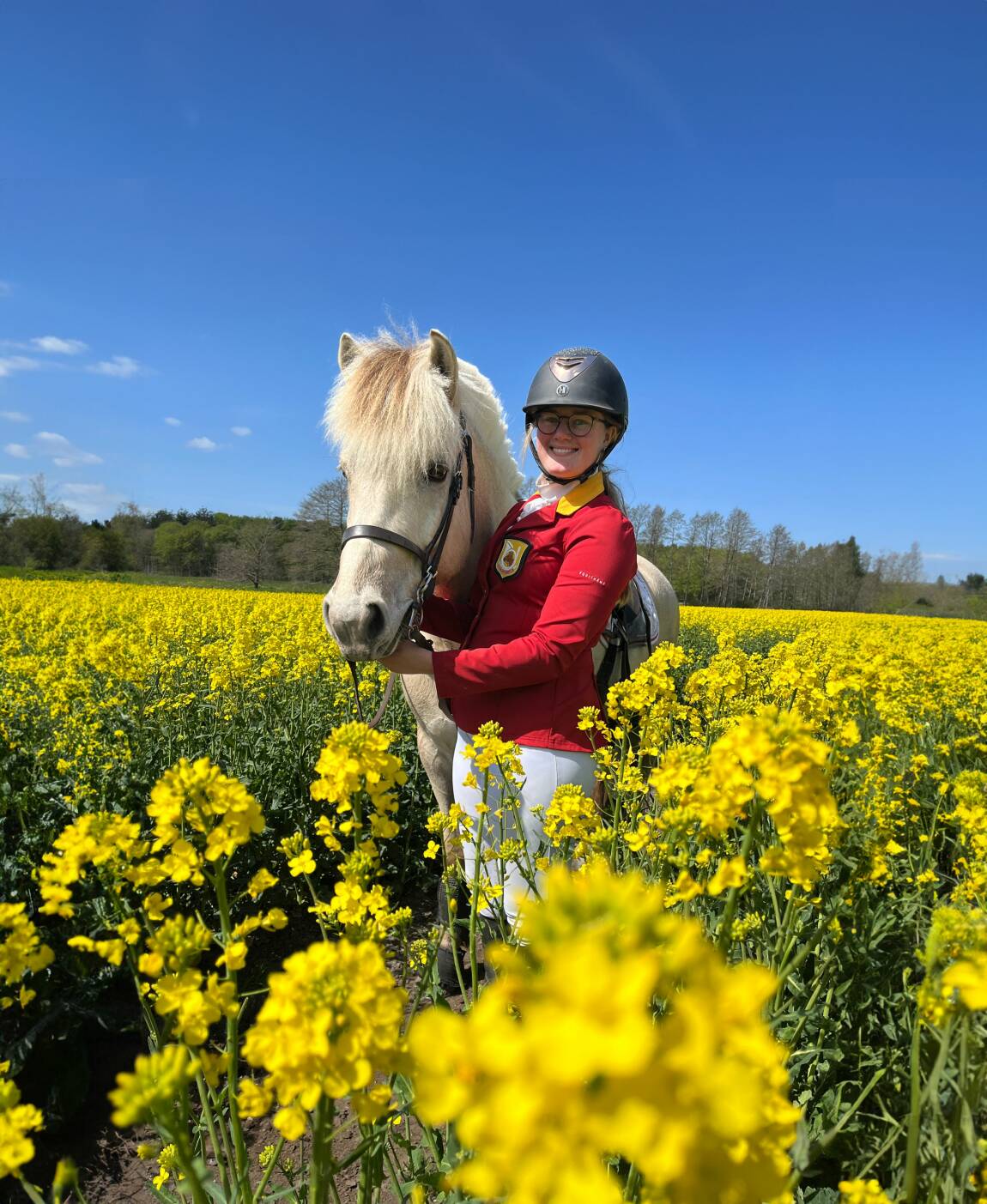
A Need for Authentic Content
Anne Katrine Vallentin, a 22-year-old influencer, has decided to take a chance and show the world what her version of life with horses looks like. Accompanied by her 10-year-old Fjordhorse, Atom, they have more than 40 thousand followers on Instagram along with popular content on YouTube and TikTok. Anne Katrine enjoys military, hunts and jumping with her beautiful Fjordhest. This challenges the norm, as these disciplines are not typically associated with this breed.
We spoke to Anne Katrine, and she shared some of her principles behind her social media pursuit of genuine and relatable social media content. She recalls when she was younger and felt frustrated when seeing online platforms filled of people with perfect horses and perfect lives. No one had bad days or sick horses. She took it inwards and immediately thought something was wrong with her and her ponies.
“When I first created my social media platform, it was important for me to show the full aspect of owning horses, because I knew what it felt like to be sitting on the other side.”
She explains how important it is to be able to mirror yourself in what you see on social media, which is why she showcases moments of lost motivation, sick horses, falls, and knocked-down rails, alongside the enjoyable and positive aspects of her equestrian journey.
Is posting imperfect content intimidating?
“Yes, it is super scary, as it is just a glimpse into real-life experiences. I openly discuss my horse's battle with stomach ulcers and I can feel there are people who judge and make assumptions. But most of it is positive comments.”
AK explains that since sharing her horse's symptoms of stomach ulcers, many people have commented that their own horses exhibit similar symptoms has the same symptoms and they are now considering getting them checked too. This, she explains, is part of her motivation to post these rather difficult and vulnerable situations, with the risk of receiving negative comments.
Tips for social media?
“I typically reply to people who has negative comments, because I want to give people an explanation of why this and that is.”
“Trust your gut feeling and if it's something ridiculous, just let it out the other ear.”
Anne Katrine prefers people be curious and ask ‘why do you do it this way’ instead of accusing, blaming or making bad comments. This way it gives her a chance to explain something where both parties may learn something new.
What is the best thing about being real on social media?
“It is the response I get from my followers, who appreciate my honesty and are able to reflect themselves in me. I want to inspire people to show what the real world can also look like.”
If you are seeking relatable content that embraces imperfections, Anne Katrine suggests following these individuals:

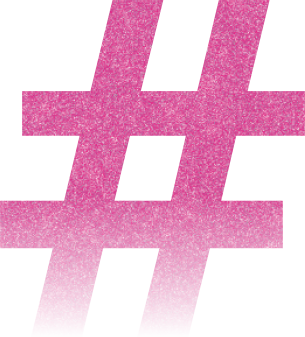
A new trend: empowering hashtags
In recent times, hashtags like #bodypositive and #blacklivesmatter have played a transformative role, empowering countless individuals worldwide and fostering a profound sense of unity. Support each other and do not be a bystander, were the words from social media expert Malene Charlotte Larsen. When confronted with unsolicited criticism or instances of bullying, make sure to say something, create awareness in a respectful manner, and let people know that such behaviour is unacceptable. Together we can be the change. Use the hashtag #realhorsecontent and post real-life, genuine aspects of horse ownership and be proud of it. We can all recognise it.
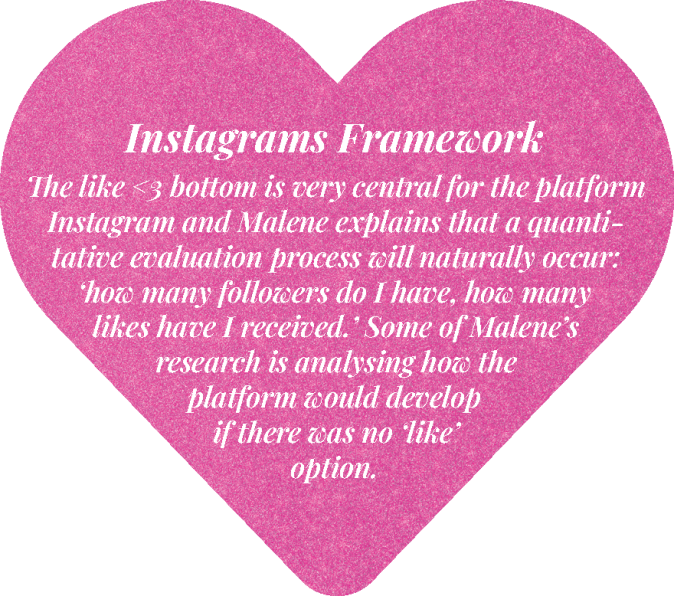
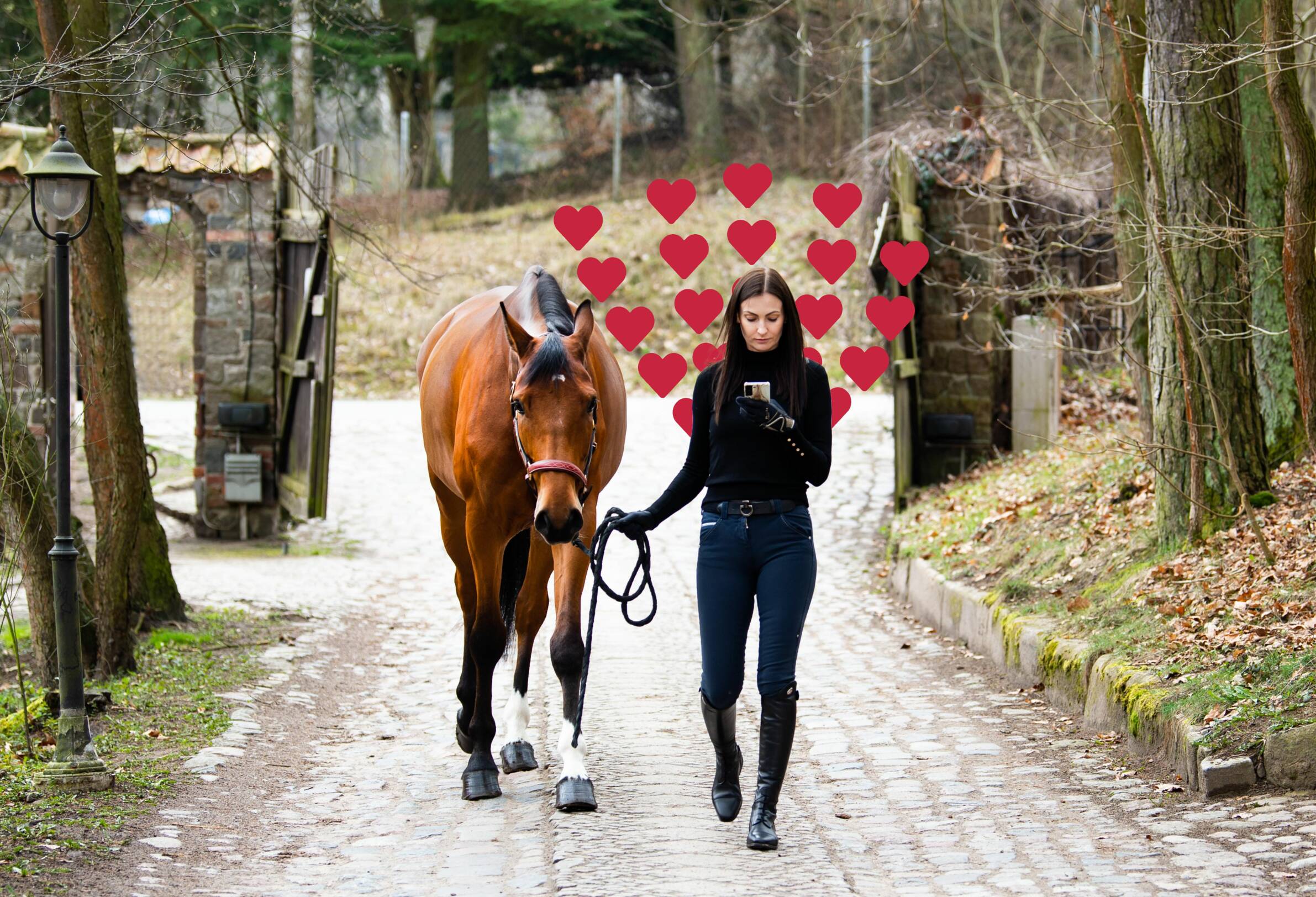
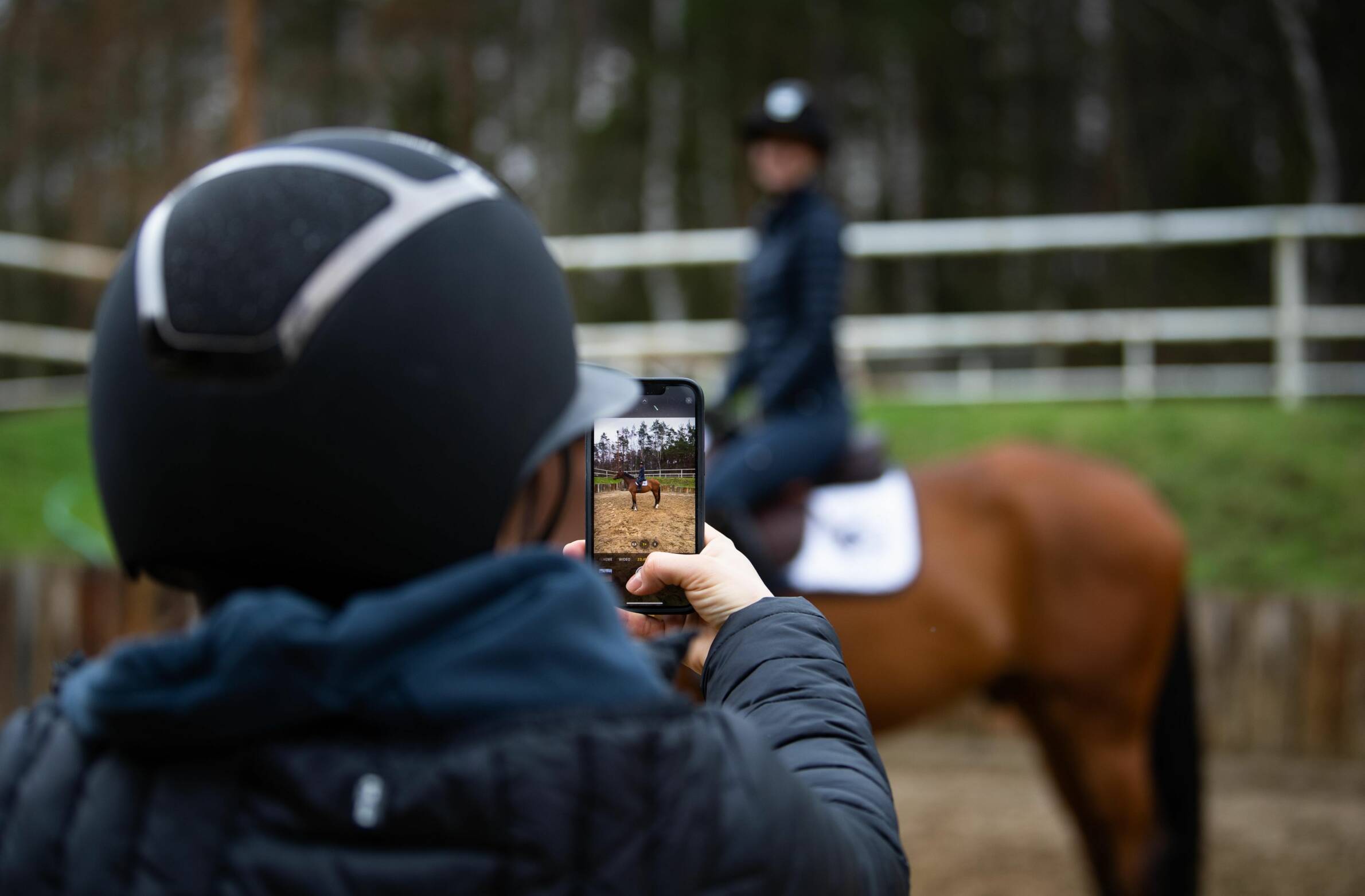
Malene’s advice
Take ownership of your own feed
This involves deliberately organizing your feed to prioritize content that aligns with your needs. It can be beneficial to follow individuals who also share imperfect content.Snooze for 30 days
Take a moment to reflect on how certain individuals you follow make you feel when viewing their content. If unfollowing seems challenging, consider snoozing them for 30 days and assess how that made you feel.Tell the person
“Something that I feel works really well is to openly express to the person ‘that comment made me upset’ and back each other up. If you witness similar situations, don’t be a bystander and speak out against unacceptable behaviour. It will have a self-regulating effect.”
The equestrian world is rather isolated with its unique passion and shared interests, and this fostering a strong sense of community and vulnerability. Malene describes this as a catch-22. On one hand, you want to be part of the community, follow the right people and know what they are up to. However, this can also evoke the feelings described by Sanja. Malene says: “That connectedness you can feel with other equestrians makes it difficult to just delete your profile or say, ‘now I don’t follow this or that person any longer.”
Both Malene and Sanja agree that following these individuals can also bring positive effects, despite triggering difficult emotions.
“I collect inspiration for exercises and ideas for training and general horse care from experienced people who may be professionals in this field.” Notes Sanja.
So, if we can gain positive inputs, gather great ideas and find inspirations from some of those same profiles, which at the same time may make us feel inadequate or inclined to blame ourselves, how can break free from this negative spiral?
Sanja’s approach to managing social media
Sanja finds solace and inspiration in connecting with people facing similar circumstances as herself. This is what helps ground her and break free from the detrimental cycle of comparing herself to flawless social media profiles.
Try not to compare, through sometimes it can be a useful exercise, but focus on real-life counterparts who can offer shared experiences and mutual support in comparable situations.
Remember, there is no definitive checklist to measure oneself against, as you are exactly where you need to be on your personal journey.
Stay true to yourself and prioritize your own growth alongside your horse, without feeling the need to prove anything to others.
It is beneficial to follow profiles that authentically portray realistic and genuine content.
Let the glamour and the perfect lifestyle profiles take a back seat and let’s instead explore alternative social media profiles, that emphasize a balanced representation of the challenges and joys associated with horsekeeping and riding.
Besides Facebook, Instagram is one of the most popular social media in current times and the equestrian world is eagerly using this platform worldwide to exchange and engage in discussions about their shared lifestyle. Social media expert Malene Charlotte Larsen, one of our readers Sanja Cheyenne Borchert, as well as influencer Anne Katrine Vallentin will join us in examining the multifaceted topic that is social media, shedding light on both its advantages and disadvantages.
The primary objective of this article is to create awareness, provide knowledge and a sense of unity that no one is alone with their feelings.
Social Media
SoMe is a commonly used term to refer to online platforms that facilitate social connections. These platforms emerged in the late 1990s, with sites like Six Degrees, Friendster, and MySpace gaining popularity, particularly among young individuals. Back then a big stationary computer at the library or at school was the most common way to access social media.
Since then, technology has rapidly advanced, and social media platforms have become easily accessible on mobile devices, leading researchers to explore their effects on users. Malene Charlotte Larsen is one of the researchers who has closely followed the development of the social media, their strategies and effects on users throughout the decades, explains:
“We know from research that some people will unintentionally shape their day towards quantitative measurements from the like-button function, by knowing how many followers they have and how many likes they have received.”
Malene explains that this can result in different content sharing than if there was no like-button. This is where the “glamorous Insta-life” might appear. Malene also attributes the classical scrapbook and the personal diary inclination to why unauthentic contents are overflowing the equestrian social media platforms. “If you make a personal scrapbook, you would most likely only pick the best images.” Malene clarifies.
There is absolutely nothing wrong in wanting to share your scrapbook or diary with other people and Malene points out that studies have shown that Instagram is just as much a platform where you share photos for your own memories as well as for others to see.
The equestrian community
The equestrian lifestyle encompasses elements of hard work, challenges, dirt, dust, mud, setbacks, failures and illness. However, these are overshadowed by moments of joy, excitement, affection, ease, loving, healthy and proud times that we also experience.
While these experiences may not always be evenly distributed and sometimes the hard times are really long and difficult. The presence of an online community, where you are able to both witness and share these the ups and downs, has been proven play a crucial role for human wellbeing. Conversely, it can be disheartening to observe others' achievements and seemingly perfect lifestyles when your own circumstances do not align.
The continuous spiral
Someone who can recognise this is one of our readers, Sanja Cheyenne Borchert. The 26-year-old equestrian shares her reflections on how social media has influenced her perspective towards training of her 6-year-old Oldenburger mare Chili and their development as a team. At times, she feels that they are behind ‘the standard’ of where they ‘should be’ and admits to comparing their progress with other riders on social media.
“I unintentionally find myself making comparisons with top riders and their process with the horses, despite knowing that I cannot make that comparison I tend to blame myself for not being good enough and that I should be doing this and that."
Getting into this self-blame spiral, is a very common action and can lead to decreased motivation, insecurity, low self-esteem, and a feeling of isolation. These are well-documented consequences associated with social media.
Sanja finds the most challenging days to be those when her training sessions with Chili does not work out. During these times, she recalls posts and videos of others who seem to have successful training sessions. She mentions that she sometimes feels guilt towards her horse recognizing that Chili is putting forth her best effort, yet Sanja is dissatisfied with their progress or performance.
By Celine Bønnelykke // Photos: Kamilla Tworkowska

In this day and age, most people use their phone quite a lot throughout their day. On their many different social medias they are bombarded with pictures and videos of the “perfect equestrian life”. But this is not always a representation of reality. This raises concerns about how this perfect representation may have a potential impact on the followers, as well as what a “real equestrian profile” looks like.
– or not so glamorous after all?

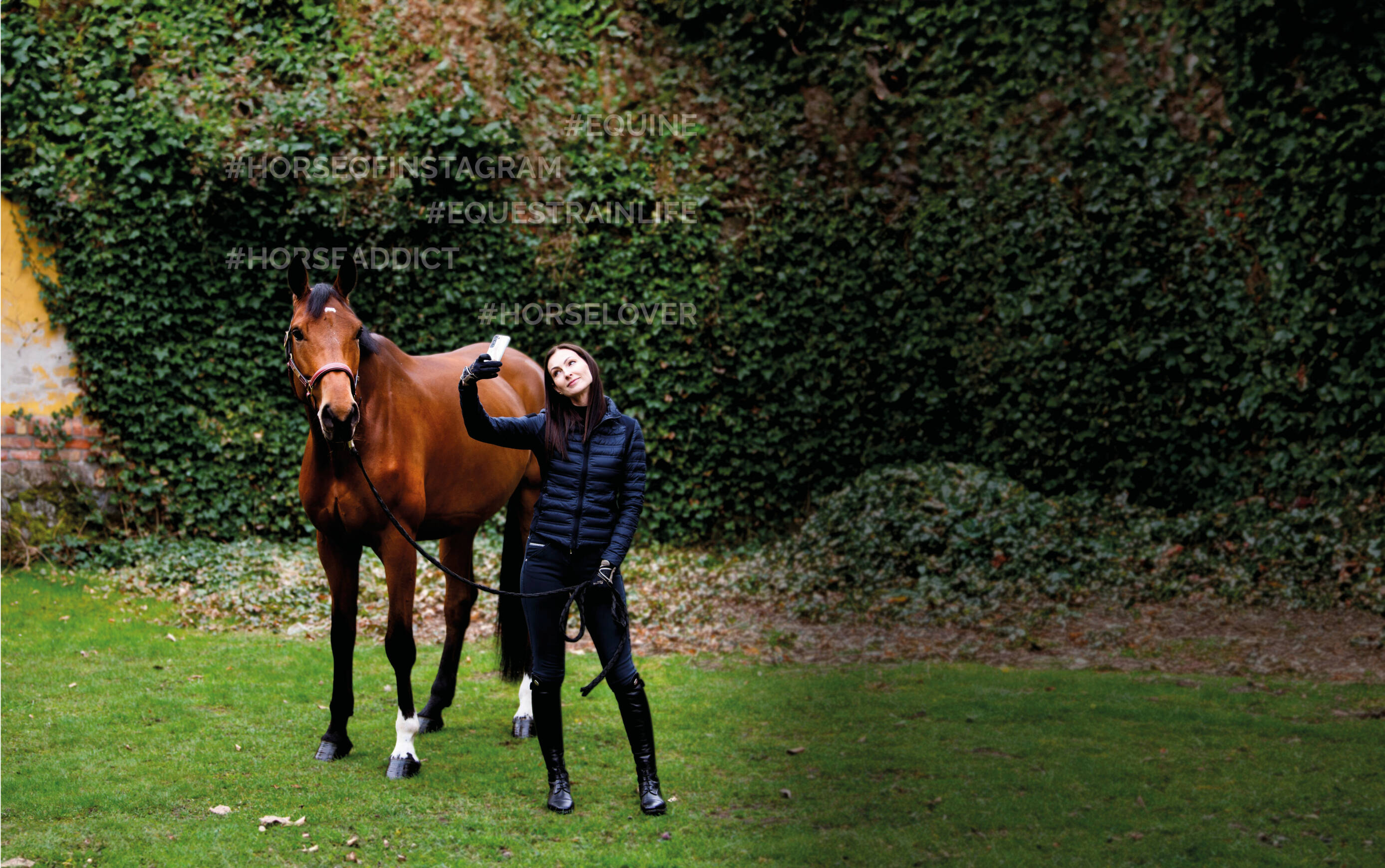
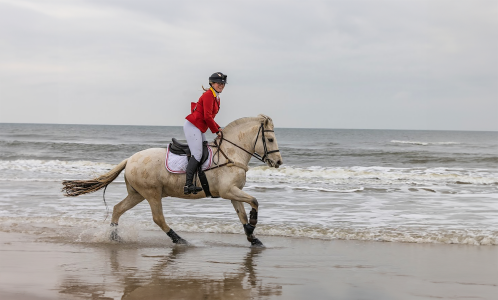

A Need for Authentic Content
Anne Katrine Vallentin, a 22-year-old influencer, has decided to take a chance and show the world what her version of life with horses looks like. Accompanied by her 10-year-old Fjordhorse, Atom, they have more than 40 thousand followers on Instagram along with popular content on YouTube and TikTok. Anne Katrine enjoys military, hunts and jumping with her beautiful Fjordhest. This challenges the norm, as these disciplines are not typically associated with this breed.
We spoke to Anne Katrine, and she shared some of her principles behind her social media pursuit of genuine and relatable social media content. She recalls when she was younger and felt frustrated when seeing online platforms filled of people with perfect horses and perfect lives. No one had bad days or sick horses. She took it inwards and immediately thought something was wrong with her and her ponies.
“When I first created my social media platform, it was important for me to show the full aspect of owning horses, because I knew what it felt like to be sitting on the other side.”
She explains how important it is to be able to mirror yourself in what you see on social media, which is why she showcases moments of lost motivation, sick horses, falls, and knocked-down rails, alongside the enjoyable and positive aspects of her equestrian journey.
Is posting imperfect content intimidating?
“Yes, it is super scary, as it is just a glimpse into real-life experiences. I openly discuss my horse's battle with stomach ulcers and I can feel there are people who judge and make assumptions. But most of it is positive comments.”
AK explains that since sharing her horse's symptoms of stomach ulcers, many people have commented that their own horses exhibit similar symptoms has the same symptoms and they are now considering getting them checked too. This, she explains, is part of her motivation to post these rather difficult and vulnerable situations, with the risk of receiving negative comments.
Tips for social media?
“I typically reply to people who has negative comments, because I want to give people an explanation of why this and that is.”
“Trust your gut feeling and if it's something ridiculous, just let it out the other ear.”
Anne Katrine prefers people be curious and ask ‘why do you do it this way’ instead of accusing, blaming or making bad comments. This way it gives her a chance to explain something where both parties may learn something new.
What is the best thing about being real on social media?
“It is the response I get from my followers, who appreciate my honesty and are able to reflect themselves in me. I want to inspire people to show what the real world can also look like.”
If you are seeking relatable content that embraces imperfections, Anne Katrine suggests following these individuals:
By Celine Bønnelykke // Photos: Kamilla Tworkowska
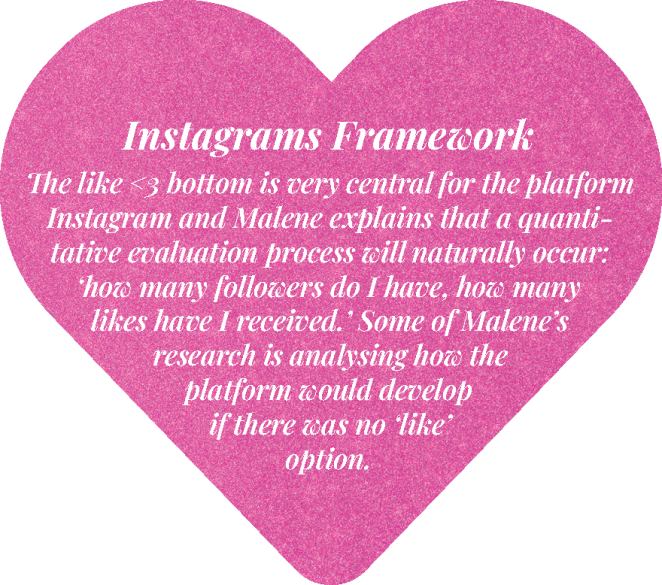
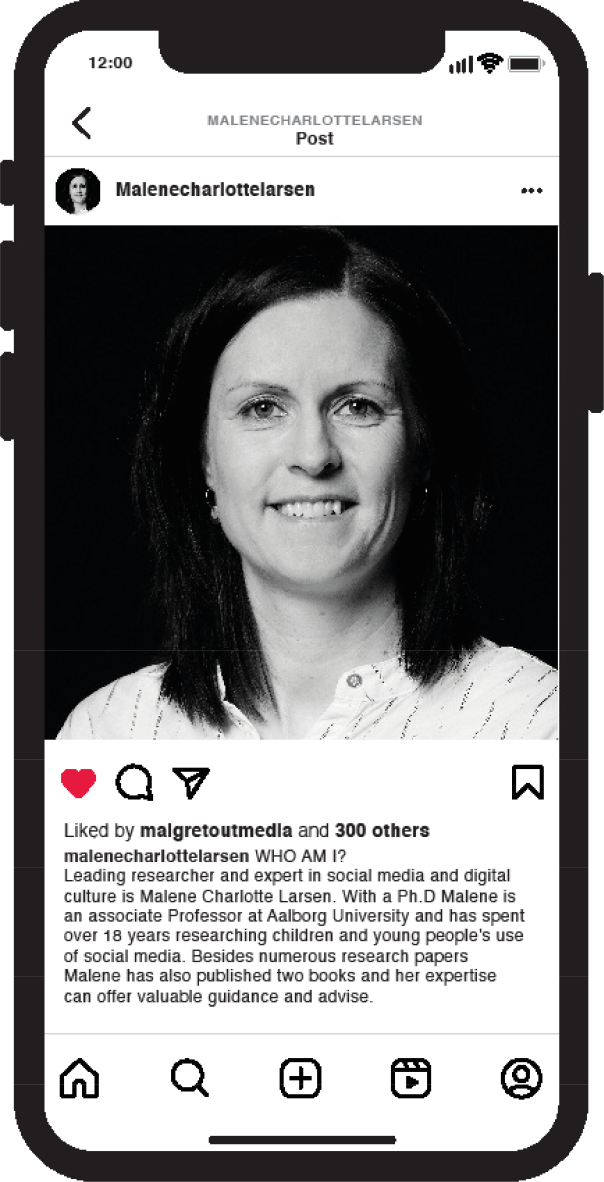
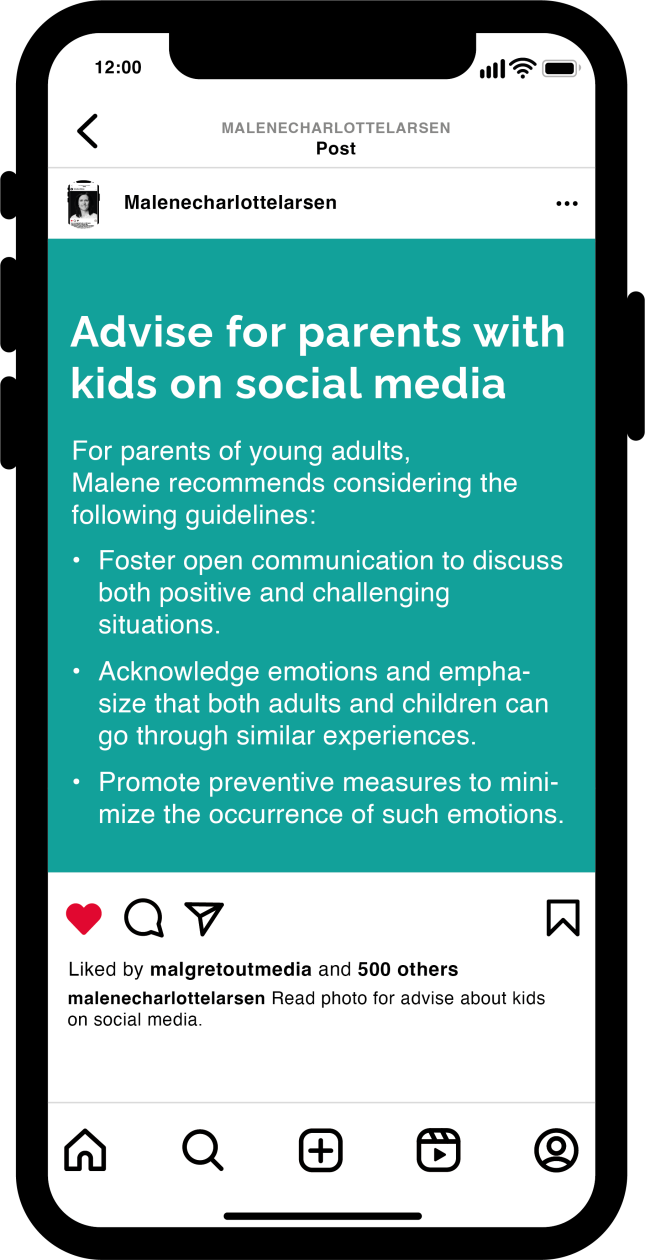
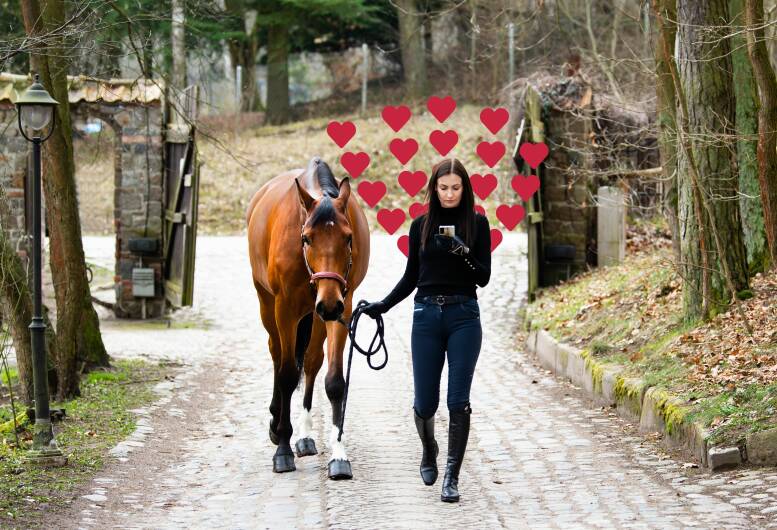
Malene’s advice
Take ownership of your own feed
This involves deliberately organizing your feed to prioritize content that aligns with your needs. It can be beneficial to follow individuals who also share imperfect content.Snooze for 30 days
Take a moment to reflect on how certain individuals you follow make you feel when viewing their content. If unfollowing seems challenging, consider snoozing them for 30 days and assess how that made you feel.Tell the person
“Something that I feel works really well is to openly express to the person ‘that comment made me upset’ and back each other up. If you witness similar situations, don’t be a bystander and speak out against unacceptable behaviour. It will have a self-regulating effect.”
The equestrian world is rather isolated with its unique passion and shared interests, and this fostering a strong sense of community and vulnerability. Malene describes this as a catch-22. On one hand, you want to be part of the community, follow the right people and know what they are up to. However, this can also evoke the feelings described by Sanja. Malene says: “That connectedness you can feel with other equestrians makes it difficult to just delete your profile or say, ‘now I don’t follow this or that person any longer.”
Both Malene and Sanja agree that following these individuals can also bring positive effects, despite triggering difficult emotions.
“I collect inspiration for exercises and ideas for training and general horse care from experienced people who may be professionals in this field.” Notes Sanja.
So, if we can gain positive inputs, gather great ideas and find inspirations from some of those same profiles, which at the same time may make us feel inadequate or inclined to blame ourselves, how can break free from this negative spiral?
Sanja’s approach to managing social media
Sanja finds solace and inspiration in connecting with people facing similar circumstances as herself. This is what helps ground her and break free from the detrimental cycle of comparing herself to flawless social media profiles.
Try not to compare, through sometimes it can be a useful exercise, but focus on real-life counterparts who can offer shared experiences and mutual support in comparable situations.
Remember, there is no definitive checklist to measure oneself against, as you are exactly where you need to be on your personal journey.
Stay true to yourself and prioritize your own growth alongside your horse, without feeling the need to prove anything to others.
It is beneficial to follow profiles that authentically portray realistic and genuine content.
Let the glamour and the perfect lifestyle profiles take a back seat and let’s instead explore alternative social media profiles, that emphasize a balanced representation of the challenges and joys associated with horsekeeping and riding.
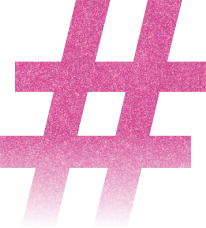

A new trend: empowering hashtags
In recent times, hashtags like #bodypositive and #blacklivesmatter have played a transformative role, empowering countless individuals worldwide and fostering a profound sense of unity. Support each other and do not be a bystander, were the words from social media expert Malene Charlotte Larsen. When confronted with unsolicited criticism or instances of bullying, make sure to say something, create awareness in a respectful manner, and let people know that such behaviour is unacceptable. Together we can be the change. Use the hashtag #realhorsecontent and post real-life, genuine aspects of horse ownership and be proud of it. We can all recognise it.
The equestrian community
The equestrian lifestyle encompasses elements of hard work, challenges, dirt, dust, mud, setbacks, failures and illness. However, these are overshadowed by moments of joy, excitement, affection, ease, loving, healthy and proud times that we also experience.
While these experiences may not always be evenly distributed and sometimes the hard times are really long and difficult. The presence of an online community, where you are able to both witness and share these the ups and downs, has been proven play a crucial role for human wellbeing. Conversely, it can be disheartening to observe others' achievements and seemingly perfect lifestyles when your own circumstances do not align.
The continuous spiral
Someone who can recognise this is one of our readers, Sanja Cheyenne Borchert. The 26-year-old equestrian shares her reflections on how social media has influenced her perspective towards training of her 6-year-old Oldenburger mare Chili and their development as a team. At times, she feels that they are behind ‘the standard’ of where they ‘should be’ and admits to comparing their progress with other riders on social media.
“I unintentionally find myself making comparisons with top riders and their process with the horses, despite knowing that I cannot make that comparison I tend to blame myself for not being good enough and that I should be doing this and that."
Getting into this self-blame spiral, is a very common action and can lead to decreased motivation, insecurity, low self-esteem, and a feeling of isolation. These are well-documented consequences associated with social media.
Sanja finds the most challenging days to be those when her training sessions with Chili does not work out. During these times, she recalls posts and videos of others who seem to have successful training sessions. She mentions that she sometimes feels guilt towards her horse recognizing that Chili is putting forth her best effort, yet Sanja is dissatisfied with their progress or performance.
Besides Facebook, Instagram is one of the most popular social media in current times and the equestrian world is eagerly using this platform worldwide to exchange and engage in discussions about their shared lifestyle. Social media expert Malene Charlotte Larsen, one of our readers Sanja Cheyenne Borchert, as well as influencer Anne Katrine Vallentin will join us in examining the multifaceted topic that is social media, shedding light on both its advantages and disadvantages.
The primary objective of this article is to create awareness, provide knowledge and a sense of unity that no one is alone with their feelings.
Social Media
SoMe is a commonly used term to refer to online platforms that facilitate social connections. These platforms emerged in the late 1990s, with sites like Six Degrees, Friendster, and MySpace gaining popularity, particularly among young individuals. Back then a big stationary computer at the library or at school was the most common way to access social media.
Since then, technology has rapidly advanced, and social media platforms have become easily accessible on mobile devices, leading researchers to explore their effects on users. Malene Charlotte Larsen is one of the researchers who has closely followed the development of the social media, their strategies and effects on users throughout the decades, explains:
“We know from research that some people will unintentionally shape their day towards quantitative measurements from the like-button function, by knowing how many followers they have and how many likes they have received.”
Malene explains that this can result in different content sharing than if there was no like-button. This is where the “glamorous Insta-life” might appear. Malene also attributes the classical scrapbook and the personal diary inclination to why unauthentic contents are overflowing the equestrian social media platforms. “If you make a personal scrapbook, you would most likely only pick the best images.” Malene clarifies.
There is absolutely nothing wrong in wanting to share your scrapbook or diary with other people and Malene points out that studies have shown that Instagram is just as much a platform where you share photos for your own memories as well as for others to see.
The equestrian community
The equestrian lifestyle encompasses elements of hard work, challenges, dirt, dust, mud, setbacks, failures and illness. However, these are overshadowed by moments of joy, excitement, affection, ease, loving, healthy and proud times that we also experience.
While these experiences may not always be evenly distributed and sometimes the hard times are really long and difficult. The presence of an online community, where you are able to both witness and share these the ups and downs, has been proven play a crucial role for human wellbeing. Conversely, it can be disheartening to observe others' achievements and seemingly perfect lifestyles when your own circumstances do not align.
The continuous spiral
Someone who can recognise this is one of our readers, Sanja Cheyenne Borchert. The 26-year-old equestrian shares her reflections on how social media has influenced her perspective towards training of her 6-year-old Oldenburger mare Chili and their development as a team. At times, she feels that they are behind ‘the standard’ of where they ‘should be’ and admits to comparing their progress with other riders on social media.
“I unintentionally find myself making comparisons with top riders and their process with the horses, despite knowing that I cannot make that comparison I tend to blame myself for not being good enough and that I should be doing this and that."
Getting into this self-blame spiral, is a very common action and can lead to decreased motivation, insecurity, low self-esteem, and a feeling of isolation. These are well-documented consequences associated with social media.
Sanja finds the most challenging days to be those when her training sessions with Chili does not work out. During these times, she recalls posts and videos of others who seem to have successful training sessions. She mentions that she sometimes feels guilt towards her horse recognizing that Chili is putting forth her best effort, yet Sanja is dissatisfied with their progress or performance.
In this day and age, most people use their phone quite a lot throughout their day. On their many different social medias they are bombarded with pictures and videos of the “perfect equestrian life”. But this is not always a representation of reality. This raises concerns about how this perfect representation may have a potential impact on the followers, as well as what a “real equestrian profile” looks like.
– or not so glamorous after all?

